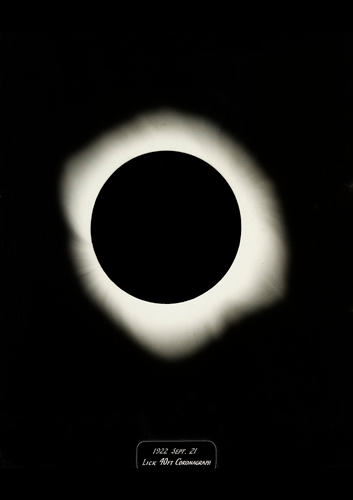Visions of the Universe at the National Maritime Museum

#spaceisawesome is the official Twitter hashtag for the National Maritime Museum’s upcoming exhibition Visions of the Universe. Seeing the images from which it is comprised, it’s hard to believe the contrary.
The exhibition takes visitors through a journey in time and of course space, showing the progress of photography for astronomy’s sake and how this in turn propelled technology yet further, pushing boundaries and providing us today with extraordinary tools and unprecedented possibilities.
Though space’s magnitude is beyond human imagination, none of it is neglected in the exhibition’s set-up. Viewers are transported by images of the Moon, the Sun, and the planets in our solar system, including peculiar shots of our own Earth, galaxies, nebulae and so on – beautiful perfection forever captured, to be contemplated and shared with generations to come.
The first astronomical object presented is also our nearest and dearest, the Moon. Pet project of the very earliest astronomers, the Moon was first looked at through Galileo’s telescope more than 400 years ago but still fascinates and dazzles scientists today. The images of our satellite are particularly fascinating, bearing in mind that only a few years past we could never have imagined taking them – for example one depicting its far, otherwise invisible, side.
The Sun also takes pride of place in this parade, with its blinding power finally revealed thanks to computer-enhanced technology. A special feature in the exhibition is Arthur Eddington’s astronomical photography of a solar eclipse in 1922, which helped prove Einstein’s Theory of Relativity.
Nebulae and galaxies are brought closer with spectacular images taken by the Hubble Space Telescope, laudable especially for its ability to show details that better explain certain phenomena and characteristics.
Alongside these is Mars, the great protagonist, a planet in reality and a star metaphorically. A 13x4m curved wall stands at the core of the exhibition: Mars Window, where images recorded by the Spirit, Opportunity and Curiosity rovers are projected, enabling viewers to admire the Martian landscape and pretend to be there too.
Finally, some pictures composed by amateur photographers bring visitors back to Earth, from where we can still enjoy the infinite magnificence of space, leaving with curiosity intact because more is certainly yet to be discovered and enjoyed.
Rita Vicinanza
Visions of the Universe is at the National Maritime Museum of Greenwich until 15th September 2013. For further information visit the museum’s website here.
























Facebook
Twitter
Instagram
YouTube
RSS